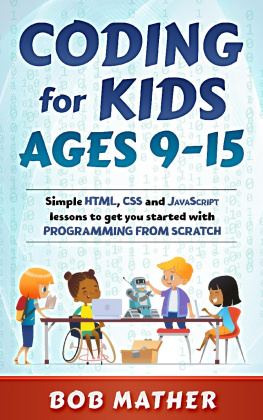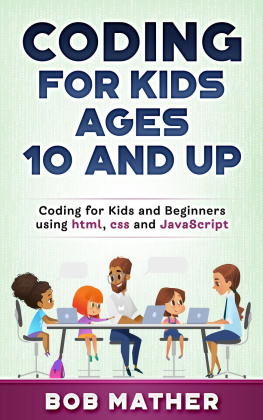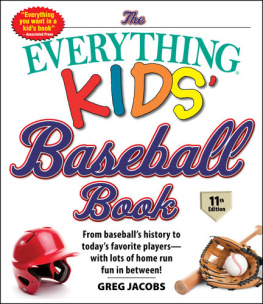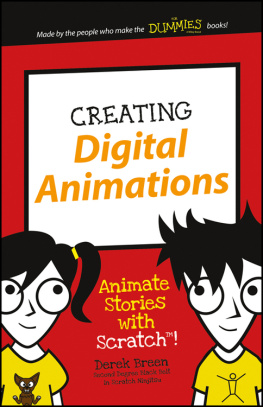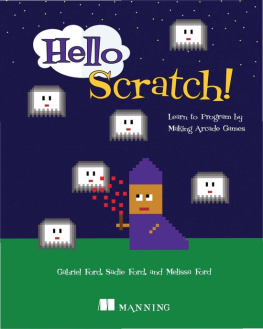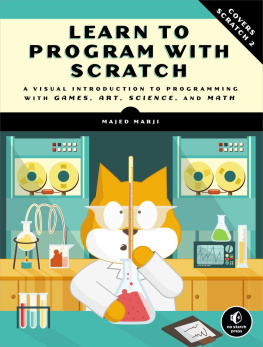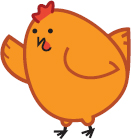EVERYONE LOVES SCRATCHJR!
CHILDREN
Its really coolI can make whatever I want. I made a project of The Very Hungry Caterpillar!
Child, 6 years old, showing off his ScratchJr book report
I was really excited to show my dad my space project. I was really proud of the characters disappearing and showing up again.
Second grader
My favorite block is Repeat Forever. You can take the Move Left block and then if you put the red Repeat Forever block at the end of it, your car will move left and left and left... forever!
Kindergarten student
TEACHERS
Students love exploring and discovering new blocks on their own, and I encourage the students to share these discoveries with their peers. I find that the best experience of the students is having them learn together.
Kindergarten teacher
One of our report card skills is child can follow multistep directions. You can see the kids practicing this when they sequence their programs.
Kindergarten teacher
The students love working on ScratchJr, in and out of class. I like that they have to think in advance about what they are going to do and then test it throughout the process.
First-grade teacher
Technology is here now and its the future, and I think the earlier that we can get kids into it, the better off theyll be... and its fun. We all know that people learn when theyre having fun.
Second-grade teacher
PARENTS
My daughter always thought that she wasnt as good with technology as her brother, but ScratchJr showed her how much she was capable of.
Parent of a second grader and a kindergartner
For skeptical parents out there, I would tell them to embrace technology and go for it with their kids. My daughter and I used ScratchJr at home and it was tremendous. We loved it.
Parent of a five-year-old
I am proud to support ScratchJr. My son is already playing it on his own, making the ducks do crazy things (he was inspired by one of the sample programs). Hes just having simple fun with it now, and I am sure it is the best start for doing something deeper later.
Parent of a five-year-old
Im treating ScratchJr as another language. I think of it as a constructive tool instead of a game tool; I think if other parents approach it that way, then their kids will get more out of it.
Parent of a second grader
THE OFFICIAL SCRATCHjr BOOK
Help Your Kids Learn to Code!
MARINA UMASCHI BERS
MITCHEL RESNICK
NO STARCH PRESS
SAN FRANCISCO
THE OFFICIAL SCRATCHJR BOOK. Copyright 2016 by Marina Umaschi Bers and Mitchel Resnick.
All rights reserved. No part of this work may be reproduced or transmitted in any form or by any means, electronic or mechanical, including photocopying, recording, or by any information storage or retrieval system, without the prior written permission of the copyright owner and the publisher.
Printed in USA
First printing
19 18 17 16 15 1 2 3 4 5 6 7 8 9
ISBN-10: 1-59327-671-0
ISBN-13: 978-1-59327-671-3
Publisher: William Pollock
Production Editor: Serena Yang
Cover and Interior Design: Beth Middleworth
Developmental Editors: Liz Chadwick and Tyler Ortman
Technical Reviewer: Claire Caine
Copyeditor: Rachel Monaghan
Compositor: Serena Yang
Proofreader: Lisa Devoto Farrell
Indexer: BIM Indexing & Proofreading Services
Hand illustration used under license from Shutterstock.com.
For information on distribution, translations, or bulk sales, please contact No Starch Press, Inc. directly:
No Starch Press, Inc.
245 8th Street, San Francisco, CA 94103
phone: 415.863.9900;
www.nostarch.com
Library of Congress Cataloging-in-Publication Data
Bers, Marina Umaschi, author.
The official ScratchJr book: help your kids learn to code / by Marina Umaschi Bers and Mitchel Resnick.
pages cm
Includes index.
Summary: "An introduction to coding for parents and kids. Includes 18 hands-on activities using ScratchJr, a programming language designed for young children (ages 5-7). Teaches computational thinking, literacy, and math skills through animated collages, interactive stories, and playable games"-- Provided by publisher.
Includes bibliographical references and index.
ISBN 978-1-59327-671-3 -- ISBN 1-59327-671-0
1. Scratch (Computer program language) 2. Computer programming--Study and teaching (Elementary) 3. Computer programming--Computer-assisted instruction. I. Resnick, Mitchel, author. II. Title.
QA76.73.S345B47 2016
005.133071--dc23
2015030543
No Starch Press and the No Starch Press logo are registered trademarks of No Starch Press, Inc. Other product and company names mentioned herein may be the trademarks of their respective owners. Rather than use a trademark symbol with every occurrence of a trademarked name, we are using the names only in an editorial fashion and to the benefit of the trademark owner, with no intention of infringement of the trademark.
ScratchJr is a trademark of Massachusetts Institute of Technology and Tufts University.
The information in this book is distributed on an As Is basis, without warranty. While every precaution has been taken in the preparation of this work, neither the authors nor No Starch Press, Inc. shall have any liability to any person or entity with respect to any loss or damage caused or alleged to be caused directly or indirectly by the information contained in it.
BRIEF CONTENTS
CONTENTS IN DETAIL
PREFACE
This books history stretches back 50 years when, in the 1960s, Seymour Papert presented a bold new vision of how computers might enter the lives of children. At the time, computers still cost tens of thousands of dollars, if not more. The first personal computers would not become commercially available for another decade. But Seymour foresaw that computers would eventually become accessible for everyone, even children, and he lay the intellectual foundation for how computing could transform the ways children learn and play.
While other researchers imagined that computers might someday be used to deliver information to children or pose questions to children, Seymour had a very different vision. He believed that children should be in control of computers, using them to experiment, explore, and express themselves. Seymour and his colleagues at MIT developed the programming language Logo specifically for children so that children could program their own pictures, stories, and games. In his 1980 book Mindstorms: Children, Computers, and Powerful Ideas, Seymour argued that children should program computers, not the other way around.
The two of us writing this book (Marina and Mitch) worked closely with Seymour when we were graduate students at MIT, and we were deeply influenced by his ideas. Both of us have dedicated our careers to extending Seymours work, providing young people with opportunities for designing, creating, and inventing with new technologies.
Mitchs Lifelong Kindergarten research group at the MIT Media Lab collaborated closely with the LEGO Group on the MINDSTORMS and WeDo robotics kits and cofounded the Computer Clubhouse Network of after-school learning centers for youth from low-income communities. More recently, the group developed the Scratch programming language and online community, which is used by millions of young people (ages 8 and up) around the world.


